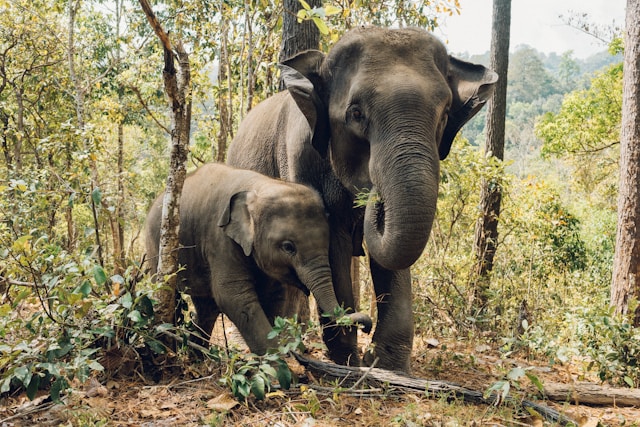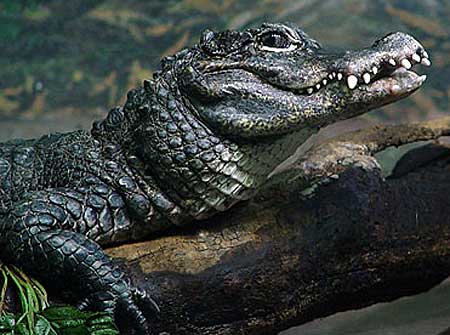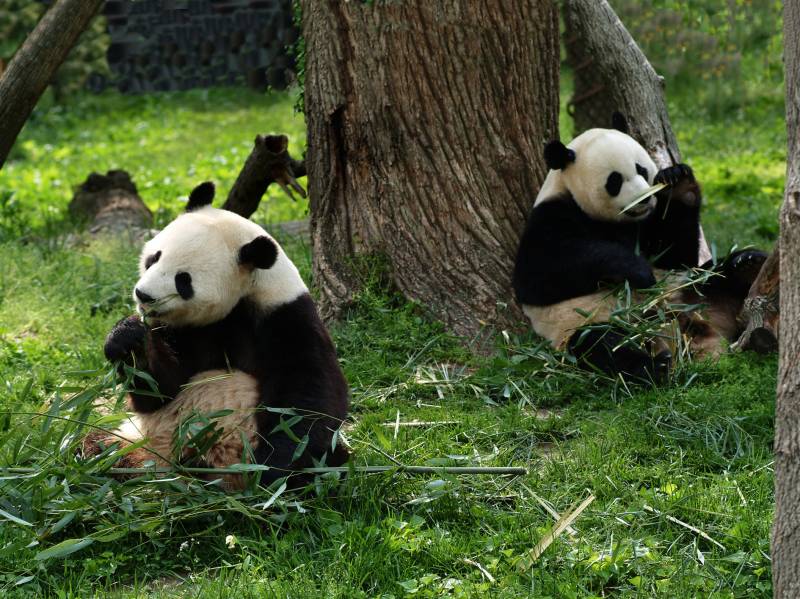by Deep Green Resistance News Service | Feb 25, 2013 | Agriculture, Biodiversity & Habitat Destruction
By Jeremy Hance / Mongabay
Industrial oil palm plantations are spreading from Malaysia and Indonesia to the Congo raising fears about deforestation and social conflict.
A new report by The Rainforest Foundation UK (RFUK), dramatically entitled The Seeds of Destruction, announces that new palm oil plantations in the Congo rainforest will soon increase fivefold to half a million hectares, an area nearly the size of Delaware. But conservationists warn that by ignoring the lessons of palm oil in Southeast Asia, this trend could be disastrous for the region’s forests, wildlife, and people.
“Governments of Congo Basin countries have handed out vast tracts of rainforest for the development of palm oil with apparently little or no attention to the likely impacts on the environment or on people dependent on the forest,” Simon Counsell, Executive Director of the Rainforest Foundation UK, said.
The palm tree used to produce palm oil originated in Africa, so production in the Congo Basin isn’t new. But industrial palm oil production involving massive plantations is a recent development for the region. The approach, modeled after operations in Southeast Asia, raises concerns among environmentalists who argue that palm oil has been a disaster for the forests of Malaysia and Indonesia. Indeed, scientific research has found that between 1990 and 2000, 86 percent of all deforestation in Malaysia was for palm oil.
The largest palm oil developer in the Congo Basin is currently Malaysian-owned Atama Plantations SARL, which is working to establish a 180,000-hectare (450,000-acre) plantation in the Republic of Congo. But the entire enterprise is masked by a complete lack of transparency, says the report.
“No publicly available maps of the concession are available, but evidence suggests that the forests designated for clearance mostly appear to be virgin rainforest that is habitat for numerous endangered species, including chimpanzees and gorillas. The area borders, and some of it may fall inside, a planned National Park and Ramsar site,” according to the RFUK report, which notes that logging has already begun on the concession.
The RFUK report further questions whether the plantation development is simply an excuse to log what it calls “primary forests with significant timber stocks.”
Another controversial concession, this time in Cameroon, has received considerable pushback from international NGOs as well as local groups. U.S.-based Herakles Farms is working to develop a 60,000 hectare palm oil plantation in forest bordering four protected areas, but the company’s reputation has been tarnished by local protests, as well as condemnation from international groups such as Greenpeace. Last year, 11 top tropical biologists sent an open letter to Herakles condemning the project.
But Herakles and other companies say they are bringing economic development to a notoriously poor part of the world.
The RFUK report notes that in many cases governments appear unwilling even to take advantage of the economic benefits of palm oil plantations, by overly-sweetening deals to foreign corporations.
“The contracts signed between governments and oil palm developers are being kept secret, reducing transparency and democratic accountability. Those contracts that have come to light show that governments have already signed away some of the potential economic benefits, by granting developers extremely generous tax breaks of 10 to 16 years and land for ‘free’ or at highly discounted rates,” the report reads.
In addition, the palm oil plantations are sparking local conflict with traditional landowners, much as they have done in Malaysia and Indonesia. Locals often have little input on the project and in some cases leases are extraordinarily long, for example Herakles Farms’ lease is 99 years.
“New large-scale oil palm developments are a major threat for communities, livelihoods and biodiversity in the Congo Basin,” Samuel Nguiffo, Director of the Center for Environment and Development (CED), Cameroon, said. “It is absolutely not the appropriate answer to the food security and job creation challenges the countries are facing. Supporting small-scale family agriculture is a better solution.”

by Deep Green Resistance News Service | Feb 20, 2013 | Agriculture, Biodiversity & Habitat Destruction, NEWS
By Jeremy Hance / Mongabay
A biofuel plantation near Yala National Park has landed Lanka Orex Leasing Company PLC (LOLC) in Sri Lanka’s highest court. Environmentalists say the company is illegally bulldozing Asian elephant habitat, including scrubland and tree stands, near the buffer zone of Yala National Park for gliricidia (Gliricidia sepium) biofuel plantation.
“This is going to be a permanent cultivation within the home range of few elephant herds,” Vimukthi Weeratunga, Environmental Foundation Limited (EFL)’s head of operations and environmental scientist, told mongabay.com. “When we take the elephant land by developing this area, elephants will move to nearby villages to raid crop as they cannot use this area for their normal activities. This is exactly the way that human-elephant conflict increased in the other parts of Sri Lanka.”
Located near the buffer zone of Yala National Park, Weetatunga states that company never conducted an environmental impact assessment (EIA), transgressing Sri Lankan law. In addition, the Sri Lanka’s Forest Department has repeatedly denied leasing the land to the company in local press, instead it gave 500 hectares (1,250 acres) to local dairy farmers for rearing cattle. Lanka Orex Leasing Company PLC was merely supposed to provide “technical assistance” to the farmers.
The site in question is currently used by smallscale farmers for cattle and farming, but Weetatunga says that this doesn’t mean the ecosystem is degraded. Instead, he says smallscale farming and livestock in the area are actually important for elephants as opposed to a monoculture plantation.
“Shifting cultivation is a traditional farming practice by clearing some scrubland and leave after the harvest for forest to re-grow. This practice is ideal for elephants to thrive as they get high quality fodder after people leave to regrow,” he explains. Between 2,000 and 4,500 Asian elephants (Elephas maximus) roam Sri Lanka’s forests. The species is currently listed as Endangered by the IUCN Red List.
The area in question is home to many other species as well, including leopards, fishing cats, sloth bears, pangolins, and a large variety of birds.
Many have noted in Sri Lankan press the irony of destroying elephant habitat, including forest lands, for so-called green energy made from biofuels. Gliricidia is a woody plant that can be burned in a biofuel power plant.
The Environmental Foundation Limited (EFL) is currently awaiting a court date next month with Lanka Orex Leasing Company over the habitat clearing.
“We are asking [for an] injunction of current activities,” Weetatunga says. “We are also seeking compensation for their action if we win the case.”
Last year, environmentalists in Sri Lanka caught U.S. food giant Dole clearing forest in Somawathiya National Park for a banana plantation. Dole denied it was inside the park for months, but finally abandoned the project after threat of lawsuit.
Like many Southeast Asian countries, Sri Lankan is currently undergoing a tension between large-scale industrial projects, such as monoculture plantations, and local farming and conservation efforts.

by Deep Green Resistance News Service | Feb 14, 2013 | Agriculture, Biodiversity & Habitat Destruction
By John Vidal / The Guardian
Nearly one in five of the world’s estimated 10,000 species of lizards, snakes, turtles, crocodiles and other reptiles are threatened with extinction, according to a study conducted by 200 experts.
But the risk of extinction was found to be unevenly spread throughout the extremely diverse group of animals. According to the paper, an alarming 50% of all freshwater turtles are close to extinction, possibly because they are traded on international markets.
The study, published by the Zoological Society of London in conjunction with the IUCN species survival commission, is the first of its kind summarising the global conservation status of reptiles, and used 1,500 randomly selected reptiles worldwide.
Out of the estimated 19% of reptiles threatened with extinction, in order of magnitude of danger, 12% are classified as critically endangered, 41% endangered and 47% vulnerable.
Three species were found to be possibly extinct. One, a jungle runner lizard, Ameiva vittata, has only ever been recorded in one part of Bolivia. In Haiti, six of the nine species of anolis lizard included in this study have an elevated risk of extinction, due to extensive deforestation affecting the country.
The spread of farming and deforestation in tropical regions represents two of the greatest threats to reptiles, says the paper.
Read more from The Guardian: http://www.guardian.co.uk/environment/2013/feb/15/reptile-species-face-extinction

by Deep Green Resistance News Service | Feb 10, 2013 | Biodiversity & Habitat Destruction
By Mongabay
China’s decision to open up collective forest for sale by individuals to outside interests will put 345,700 hectares or 15 percent of the giant panda’s remaining habitat at risk, warns a letter published in the journal Science.
The letter, authored by a team of researchers including scientists from Conservation International and Chinese institutions, says that China’s land tenure reform will open key panda habitat to logging and conversion by allowing collectively-owned land to be transferred or leased to commercial enterprises. The letter cites a recent case where a timber company purchased 15,000 ha of forest in Chongqing Province.
“This change puts these vital habitats potentially under threat from commercial logging, increased collection of firewood and non-timber forest products by outside enterprises, and other commercial development activities,” said co-author Russell Mittermeier, a biologist who serves as President of Conservation International (CI), in a statement. “Sadly, it would threaten to deforest, degrade or disturb up to 15% of the remaining giant panda habitat.”
“The reform contradicts the great steps the Chinese government has taken to conserve the giant panda in recent decades,” added Li Zhang, a scientist with Conservation International China. “The government has designated 63 panda reserves which constitute over 60% of the panda’s remaining wild habitat, improved the species’ endangered habitats by reforesting or restoring native forests and restricting human access to these, increased the number and capacity of forestry staff in these areas, strictly banned hunting of the species, and pioneered captive breeding techniques. As a result of these efforts, the official number of giant pandas in the wild has increased to nearly 1,600 from less than 1,000 in the late 1980s. It would be inexcusable to reverse this great achievement for these majestic creatures and our country’s recent conservation efforts.”
The giant panda is classified as critically endangered on the IUCN Red List due to habitat loss and hunting. The species has been driven to extinction in Vietnam and Myanmar. In China it’s habitat — old growth forests — has fallen by roughly 60 percent since 1950.
by Deep Green Resistance News Service | Nov 24, 2012 | Biodiversity & Habitat Destruction, Mining & Drilling
By Rachel / Deep Green Resistance Cascadia
In the arid Powder River Basin of Northern Wyoming and Southern Montana, the long roots of sagebrush draw water from deep beneath the soil. The ability to access water in this way makes sagebrush an important star of the Basin’s biotic constellation. Species of grasses and herbs are allowed to thrive on the moisture that the sagebrush draws toward the surface.
Elk, mule deer, and pronghorn antelope access the water stored in the plant’s pale gray, three-pointed leaves. Greater sage-grouse eat the sagebrush too, while making their nests and performing their complex courtship rituals among the plant’s low branches. The soil is the basis for the lives of these creatures and countless others, and the precious moisture within the soil is thread that connects them in a web of relationship.
The Powder River Basin’s coal extraction industry doesn’t place the same value on soil, and neither does the government that serves the coal extraction industry. The region extracts about forty percent of the coal mined in the United States. More coal is mined annually from the Powder River Basin than is mined annually from the entire Appalachian region.
The industry calls the soil and rock that lies between their extraction equipment and the coal seams ‘overburden,’ and they don’t take kindly to being burdened with the survival of the beings that depend on that soil. No soil means no sagebrush, and no sagebrush means no sage-grouse.
Though the threat posed to the sage-grouse by human activity is acknowledged by industry and governmental regulatory agencies alike, both have chosen to prioritize the economy over living beings both human and non-human. Nevada, another state inhabited by sage-grouse, is developing a conservation plan intended to “sufficiently conserve the species while enabling our economy to thrive.”
This, of course, is nonsense. Since coal is a non-renewable resource at the center of our culture’s one-time energy extraction blowout, the destruction of the land must continue, and the wasting of soil must accelerate, in order to keep the US coal profit machine running. By definition, coal mining cannot coexist with the greater sage-grouse, and it is time to choose sides.
In 2010, the Fish and Wildlife Service decided that the listing of sage grouse as a species endangered by human activity was “warranted but precluded,” meaning that the bird needs protection but “other species in bigger trouble must come first.” Presumably, the “other species” they refer to include the US coal industry – which is definitely in big trouble. Though coal remains a major source of electricity generation, the combination of band-aid environmental protections and increased competition from cheap natural gas is driving the coal industry’s profits way down from previous levels. The industry is not taking this decrease in revenue lying down.
The coal industry is looking to boost their profits by tapping into the Pacific market. Unlike the US coal market, which has lately been flat, the Asian market’s demand for coal is exploding. China is building at least one new coal-fired power plant every week. A big obstacle to exploiting this market is a lack of coastal Pacific transport capacity. To really cash in on Chinese demand, they’ll need more rail lines and expanded West coast ports, and there’s already a plan in the works to get those things in spite of the impact that their construction will have on marine life.
One of the most aggressively pursued port-expansion projects is the Gateway Pacific Terminal proposed for Cherry Point Washington, home to the Cherry Point herring. As a keystone species, the herring support a variety of other species that share their habitat. They provide as much as two thirds of the food supply for Chinook Salmon, who in turn provide as much as two thirds of the food supply for the Puget Sound Orcas.
Unsurprisingly, herring populations have decreased by ninety five percent since the late 1970’s. Cherry Point is also already home to the largest oil refinery in Washington state. Vessel traffic in this area is already bloated by a rise in exports and the promise of a new pipeline from Canada. If this port were expanded as proposed, it would become the largest of its kind in North America. The expanded port would allow the transport of an additional forty eight million metric tons to foreign markets each year, which would require the use of an additional four hundred and fifty vessels each year – each one containing a devastating spill, just waiting to be unleashed.
Another expansion has been proposed for the Millenium Bulk Terminal at Longview, also in Washington state. The Millennium Bulk Terminal at Longview applied for 5.7 million tons but later admitted to plans for seeking 60 million tons once a permit was granted. Other ports, including the Port of Grays Harbor in Hoquiam, Oregon International Port of Coos Bay, and Port of St. Helens are also under consideration. Also under consideration is Prince Rupert’s Ridley Island terminal in British Columbia, and other locations in BC may be under similar threat.
Right now, port expansion approval process for Cherry Point and Longview is in the scoping period, which means that hearings are being held for public comment across Oregon and Washington.
The outcome of these hearings will be used to draft an Environmental Impact Statement (EIS), and that statement will be used to inform permitting decisions. No doubt, government and industry will again be looking for a false compromise between living communities and extractive industry. We can stand with the herring, the sage-grouse, and all the members of their extended family, or we can capitulate to the demands of a system with an infinite imperative to destroy the land, air, and sea.
The negative effects of the proposed expansions (not to mention the negative effects of not only transporting fossil fuels, but also mining and burning them) are not limited to the possibility of extinction for the Cherry Point Herring and the damage their absence would do to those species who depend on them. Coal dust and noise pollution worsen in their effect on both humans and non-humans if this industry gets its way, and both the environmental and economic costs that big-coal externalizes will be forced back onto local communities.
All tactics must be on the table. We will physically halt construction with our bodies when the time comes, but without a community of support, direct action is likely to fail. Engagement with the hearing process will also likely fail unless it is accompanied by diverse tactics and practical strategy. We must use these hearings to connect with others in the communities that stand to be affected, and to send the message that omnicidal industrial projects like this one will not stand unopposed.
You can find more information about the proposed port expansions here: http://www.coaltrainfacts.org/key-facts



